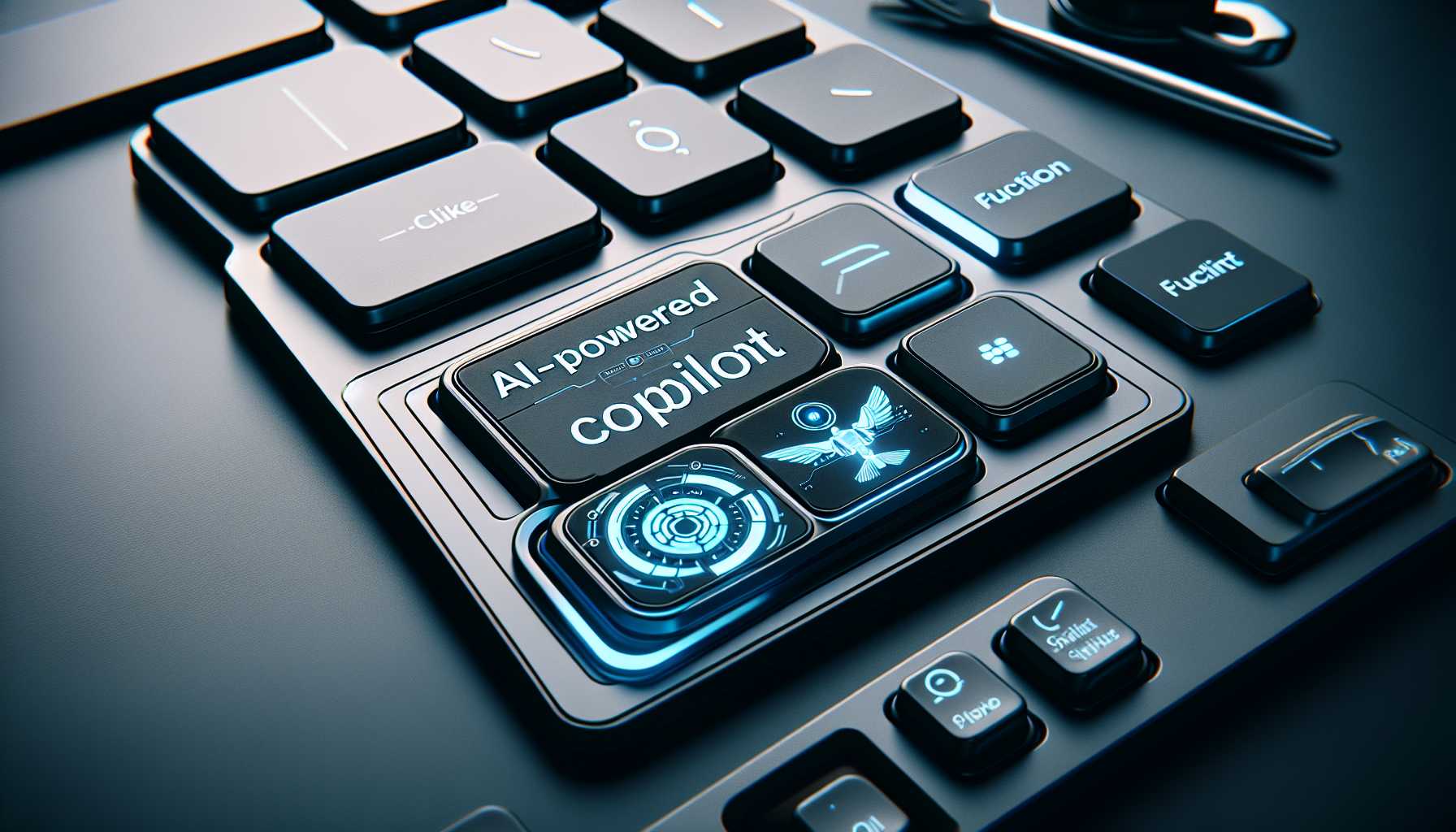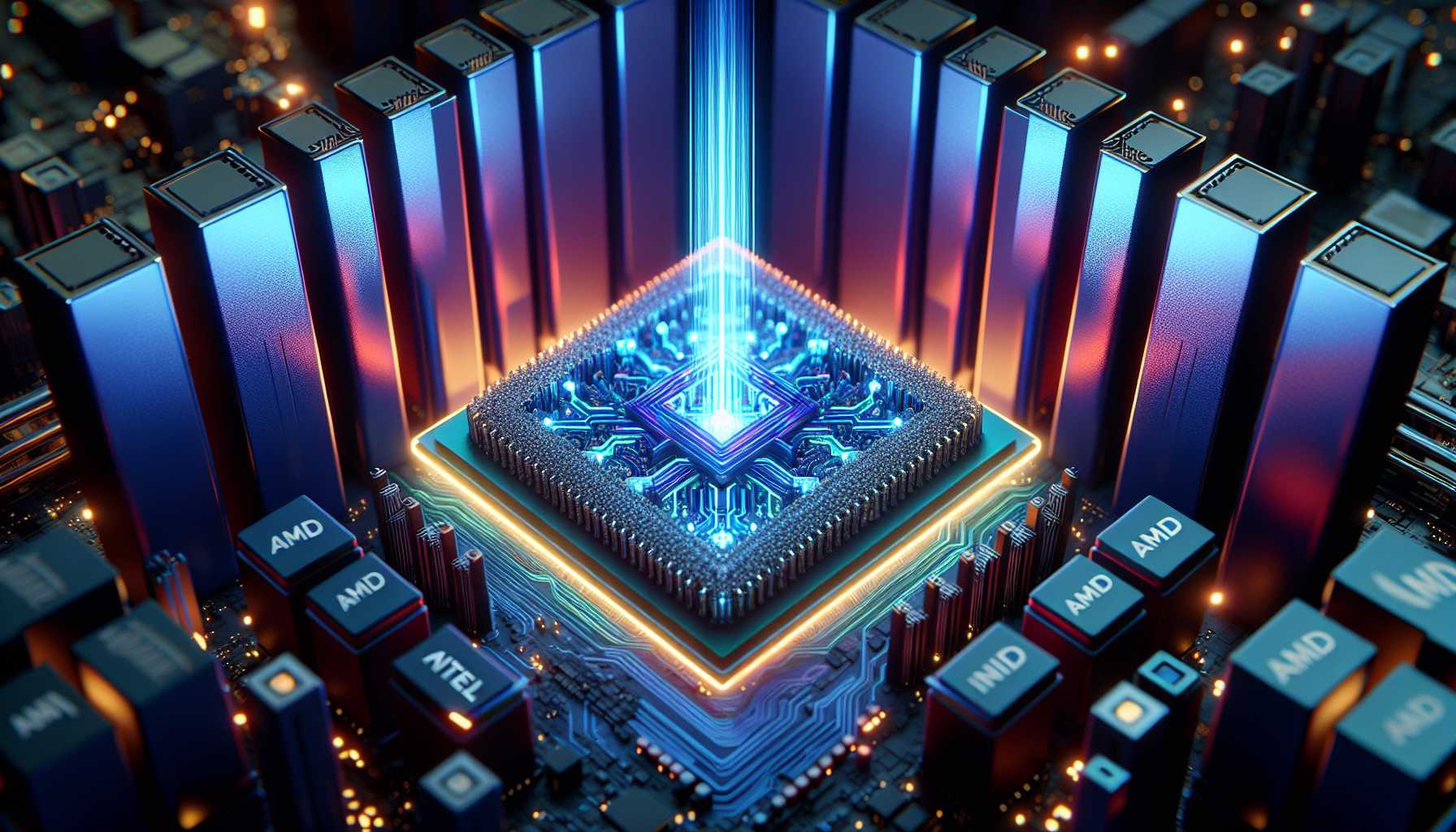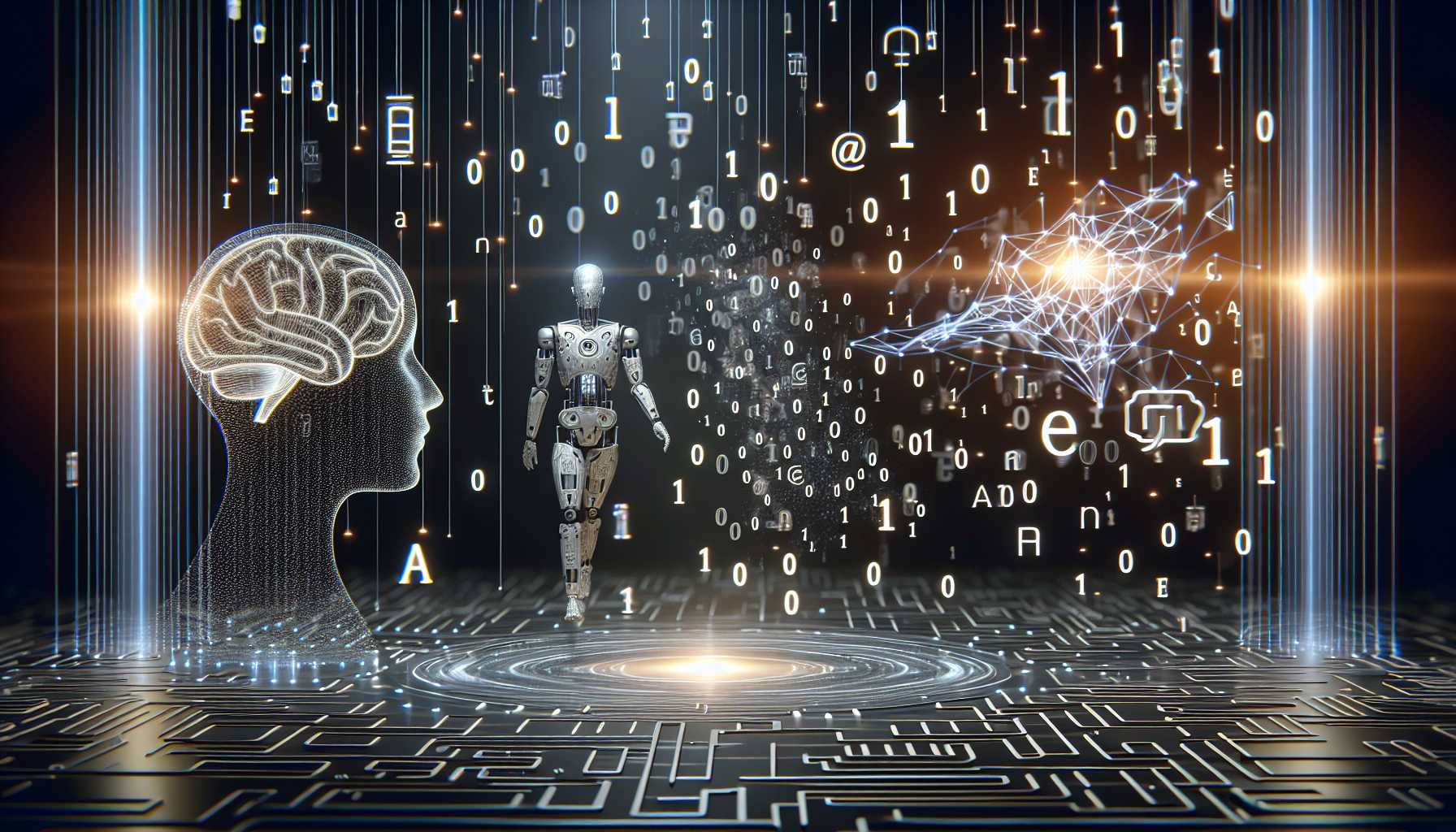The Winds of Change: Microsoft’s Copilot Key Reshapes AI Accessibility
 AI devotees, brace yourselves for a paradigm shift practically at your fingertips, literally! Microsoft’s unveiling of a fresh PC keyboard layout with a designated Copilot key is nothing short of historic. Picture this: the classical Windows keyboard, a bastion of familiarity for over three decades, is now welcoming its newest member—the AI-powered Copilot key, poised to usurp the right Control key’s throne. This isn’t just another key; it’s a statement, a bold declaration of Microsoft’s AI ambitions, daring to commoditize AI in an unprecedented maneuver. It’s akin to a technological”Kairos” moment for Microsoft, deftly weaving AI into the tapestry of our digital experiences in a way that’s both seamless and authoritative. The question percolating in the minds of Windows users is clear: will this AI shortcut key be a gimmick or a game-changer? With Microsoft’s chips—both figurative and literal—on the table, the tech giant is seemingly betting the digital house on AI’s mass appeal, hoping to seduce both consumers and enterprises alike.
AI devotees, brace yourselves for a paradigm shift practically at your fingertips, literally! Microsoft’s unveiling of a fresh PC keyboard layout with a designated Copilot key is nothing short of historic. Picture this: the classical Windows keyboard, a bastion of familiarity for over three decades, is now welcoming its newest member—the AI-powered Copilot key, poised to usurp the right Control key’s throne. This isn’t just another key; it’s a statement, a bold declaration of Microsoft’s AI ambitions, daring to commoditize AI in an unprecedented maneuver. It’s akin to a technological”Kairos” moment for Microsoft, deftly weaving AI into the tapestry of our digital experiences in a way that’s both seamless and authoritative. The question percolating in the minds of Windows users is clear: will this AI shortcut key be a gimmick or a game-changer? With Microsoft’s chips—both figurative and literal—on the table, the tech giant is seemingly betting the digital house on AI’s mass appeal, hoping to seduce both consumers and enterprises alike.
The AI Gamble: Betting Big on Local AI Processing
 Picture AI not as a distant, sophisticated juggernaut housed in gargantuan data centers but as a sleek, on-the-go companion nestled within your desktop processor. Microsoft, planting its flag in this next tech frontier, eyes a future brimming with the potential of localized AI processing in partnership with AMD and Intel. This isn’t just a pipe dream. Imagine AI models churning effortlessly on your consumer chips or Microsoft’s potent datacenter processors, drastically reeling in the overheads of AI development. This is the crux of democratizing AI—bringing it to the masses without the prohibitive price tag. But like any forward-looking venture, success isn’t etched in stone. It’s the public’s embrace that will ultimately crown this initiative a revolution or reduce it to an overhyped footnote. Either way, change is afoot in the AI terrain, and the unrelenting pace of innovation harbors both promise and unpredictability.
Picture AI not as a distant, sophisticated juggernaut housed in gargantuan data centers but as a sleek, on-the-go companion nestled within your desktop processor. Microsoft, planting its flag in this next tech frontier, eyes a future brimming with the potential of localized AI processing in partnership with AMD and Intel. This isn’t just a pipe dream. Imagine AI models churning effortlessly on your consumer chips or Microsoft’s potent datacenter processors, drastically reeling in the overheads of AI development. This is the crux of democratizing AI—bringing it to the masses without the prohibitive price tag. But like any forward-looking venture, success isn’t etched in stone. It’s the public’s embrace that will ultimately crown this initiative a revolution or reduce it to an overhyped footnote. Either way, change is afoot in the AI terrain, and the unrelenting pace of innovation harbors both promise and unpredictability.
Mobile Computing Meets Intuitive AI: Copilot’s Next Frontier
 If making AI ubiquitously accessible on PCs wasn’t enough, Microsoft is not stopping there. The tech behemoth is quietly marching Copilot onto mobile territory, ensuring its AI assistance is just a tap away, whether you’re thumbing an Android or swiping an iPhone. The intersection of mobile computing and AI is evolving before our eyes into a landscape where our digital companions are more than mere tools; they’re poised to become extensions of our cognitive processes. It’s this integration that could potentially revolutionize how we interact with technology, making the leap from conveniences to integral parts of our decision-making, learning, and creative endeavors. So the next time you casually unlock your smartphone, consider this: you’re not just tuning into a network of data; you’re connecting with an AI partner ready to amplify your human potential.
If making AI ubiquitously accessible on PCs wasn’t enough, Microsoft is not stopping there. The tech behemoth is quietly marching Copilot onto mobile territory, ensuring its AI assistance is just a tap away, whether you’re thumbing an Android or swiping an iPhone. The intersection of mobile computing and AI is evolving before our eyes into a landscape where our digital companions are more than mere tools; they’re poised to become extensions of our cognitive processes. It’s this integration that could potentially revolutionize how we interact with technology, making the leap from conveniences to integral parts of our decision-making, learning, and creative endeavors. So the next time you casually unlock your smartphone, consider this: you’re not just tuning into a network of data; you’re connecting with an AI partner ready to amplify your human potential.
Generative AI: The Public’s Love Affair with Machine Intelligence
 The tech ecosystem is abuzz with the siren call of generative AI – a bewitching melody that’s not just luring in the avid technophiles, but also bewitching the broader public. Stalwarts like OpenAI’s ChatGPT have become overnight sensations, raking in staggering revenues, while art platforms like Midjourney have shown profitability without the typical Silicon Valley fundraising spree. This is our zeitgeist: a tech landscape where AI not just sparks fleeting curiosity but engenders true, pragmatic utility and, dare I say it, joy. These are the new darlings of tech’s fast lane – AI constructs that don’t just serve up data but roll up their digital sleeves to craft content. Herein lies a telling shift from traditional computational roles to ones of creators, confidants, and colleagues. As these platforms dazzle us with their digital savoir-faire, one cannot help but marvel at the inexorable rise of machine creativity, an ascent that is as exciting as it is unpredictable.
The tech ecosystem is abuzz with the siren call of generative AI – a bewitching melody that’s not just luring in the avid technophiles, but also bewitching the broader public. Stalwarts like OpenAI’s ChatGPT have become overnight sensations, raking in staggering revenues, while art platforms like Midjourney have shown profitability without the typical Silicon Valley fundraising spree. This is our zeitgeist: a tech landscape where AI not just sparks fleeting curiosity but engenders true, pragmatic utility and, dare I say it, joy. These are the new darlings of tech’s fast lane – AI constructs that don’t just serve up data but roll up their digital sleeves to craft content. Herein lies a telling shift from traditional computational roles to ones of creators, confidants, and colleagues. As these platforms dazzle us with their digital savoir-faire, one cannot help but marvel at the inexorable rise of machine creativity, an ascent that is as exciting as it is unpredictable.
Subliminal Affinity: DeepMind’s Image Experiment and the Human Connection
 Google’s DeepMind has orchestrated an intriguing ballet of human psychology and machine learning, revealing that the dance between what AIs perceive and what we recognize might be more closely entwined than we ever imagined. The perturbed images—flowers tweaked to allure AI into seeing feline features—mysteriously sway human minds, albeit subtly, towards the same perception. This isn’t just a quirky footnote in AI research; it’s a profound bridge between the cerebral realms of carbon and silicon. The implications of these subliminal nudges extend beyond cocktail party trivia; they could very well inform safety protocols, UI/UX designs, and even security measures. This interplay between man and machine, once thought to be distinct and insurmountable, is now blurring in fascinating and unexpected ways. This is our AI odyssey, a spectacular fusion of what’s possible today and the dreams of tomorrow’s tech. It’s in these incremental yet impactful milestones that we find the heart of our technological epoch, pulsing with the promise of artificial minds in harmony with human spirits. Who said magic was just a fairy tale
Google’s DeepMind has orchestrated an intriguing ballet of human psychology and machine learning, revealing that the dance between what AIs perceive and what we recognize might be more closely entwined than we ever imagined. The perturbed images—flowers tweaked to allure AI into seeing feline features—mysteriously sway human minds, albeit subtly, towards the same perception. This isn’t just a quirky footnote in AI research; it’s a profound bridge between the cerebral realms of carbon and silicon. The implications of these subliminal nudges extend beyond cocktail party trivia; they could very well inform safety protocols, UI/UX designs, and even security measures. This interplay between man and machine, once thought to be distinct and insurmountable, is now blurring in fascinating and unexpected ways. This is our AI odyssey, a spectacular fusion of what’s possible today and the dreams of tomorrow’s tech. It’s in these incremental yet impactful milestones that we find the heart of our technological epoch, pulsing with the promise of artificial minds in harmony with human spirits. Who said magic was just a fairy tale





